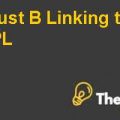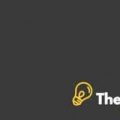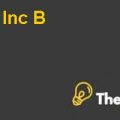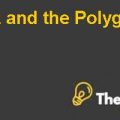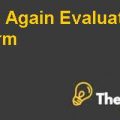My Approach as an Ethical Leader: Establishing an Ethical Culture in my Organization (Essay A)
Individuals need to transform the culture of their organization and become the ultimate ethical leaders of their organization. An organizational culture which emphasizes upon ethical leadership and ethical decisions within the organization cuts down all the misbehavior of organization. Leaders need to be altruistic in their approach which means that they need to follow the ethical guidelines of the organizational development and their zeal for helping others should be derived on the basis of their motivation of helping other people(Robbins, 2009).
Most of the organizations today follow the mental models of leadership. Mental models can be defined as the representations of the reality, which are used by the individuals to understand specific phenomena. They also represent generalizations, which influence the way of how we tend to understand this world and take action. My former organization also had its own mental model of leadership, which was characterized by rigidity, hierarchy and mechanics(Keeffe, 2008).
We have always learned that the world in which we live in is predictable, linear and stable. Managers of most of the organizations and my former organization have always believed that fixed structures and highly formal leadership styles provide order and clarity. However, the main issue with such mental models of leadership is that they only work within the finite contexts of the organizations for which they have been designed. Those leadership styles, which are rigid, strict, and do not take any input from their employees do not work in all the situations(Keeffe, 2008).
When new conditions arise and unusual situations such as global financial crisis or the highly complex challenges are faced by the organizations then such mental models do not work at all. This type of leadership mental model fails easily because itfails to adapt to the complex and the rapidly changing external environment. This is because itleads the employees in a fixed manner and the power of decision-making is lost(Biro, 2013).
My Approach as an Ethical Leader Establishing an Ethical Culture in my Organization Harvard Case Solution & Analysis
Such type of leadership mental models need to be changed and they should be less strict, informal and more of a participative nature. Leadership model, which is ethical, charismatic and influential, works best in managing the people in organizations. Making such changes to the current leadership mental model would strengthen the culture by enhancing knowledge sharing, ethics, communication, conflict management and decision making process of the organization(Tozer, 2012).
In order to create an ethical organization, there are a number of practices that should be implemented for transforming the current culture of the organization to an ethical culture. These practices are as follows:
Ethical expectations should be communicated to all the members of the organization. An organizational code of ethics should be created so that all the ambiguities are reduced by the leaders. The code of conduct should state all the ethical and the primary values that need to be followed by the employees.
Ethics training should be provided to the employees through workshops, training programs and seminars and these training methods should be used for reinforcing the ethical values for creating an ethical organization (Keeffe, 2008)...............
This is just a sample partial work. Please place the order on the website to get your own originally done case solution.


